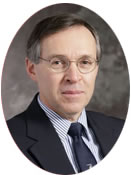|
pelinks4u EDITORIAL
written by Steve
Jefferies
THE ROAD AHEAD: CHANGING PHYSICAL EDUCATION
AND SCHOOL SPORTS
 In
1967, a young, newly graduated physical education
teacher named Alan
Tepper began teaching in Long Island,
NY. Ten years and two masters degrees later,
Alan switched coasts to Washington State and
continued what would turn out to be a 42-year
career teaching elementary school PE. Like
so many new PE teachers, Alan started out
expecting to split his time between teaching
in the gym and after-school coaching. But
it wasn’t to be. Instead, Alan saw an
urgent need for his students to get more physical
activity than he could provide in their twice-weekly
PE classes. In
1967, a young, newly graduated physical education
teacher named Alan
Tepper began teaching in Long Island,
NY. Ten years and two masters degrees later,
Alan switched coasts to Washington State and
continued what would turn out to be a 42-year
career teaching elementary school PE. Like
so many new PE teachers, Alan started out
expecting to split his time between teaching
in the gym and after-school coaching. But
it wasn’t to be. Instead, Alan saw an
urgent need for his students to get more physical
activity than he could provide in their twice-weekly
PE classes.
Opening his gym before school he invited
students to start their day with activity.
Different skills were taught and practiced
during lunch recess. After school, Alan organized
a circus arts program that later morphed into
the hugely successful “Panther
Pride” demonstration unicycling
team. Parents who were once Alan’s elementary
students eventually formed the mainstay of
this after-school program, and now watch their
own youngsters enjoy a physically active lifestyle.
At the end of this academic year Alan plans
to retire. He hopes he can find someone motivated
to continue this tradition of integrating
physical activity throughout and beyond the
school day. He’s hoping that his replacement
will recognize that this role is a viable
and desirable alternative to interscholastic
coaching.
For years, the physical education profession
has struggled to resolve its relationship
with school sports. Much of the dilemma has
focused on the potential conflict between
teaching and coaching roles. It’s commonly
argued that most physical educators who coach,
devote too much attention to extra-curricular
sports at the expense of quality teaching.
Critics point out that there is simply no
time to plan quality physical education instruction
when simultaneously coaching. They have a
good point. It’s hard to imagine the
successful combination of both, especially
coupled with family or other outside work
responsibilities.
But maybe our thinking about this is wrong.
Maybe those of us in teacher education need
to recognize that our graduates are going
to seek additional ways to work with kids
outside of PE classes regardless of the difficulties
we think they’ll face. Maybe it’s
coaching. Maybe it could be something similar
to the role Alan Tepper created in his elementary
school. In at least one respect the mission
of both programs is similar. Participating
in sports or any other physical activity provides
unique opportunities for social, emotional,
intellectual, and of course health benefits.
This is where interscholastic sport needs
some rethinking. We’ve yet to recognize
that athletics could be at the forefront of
solving today’s obesity crisis. Think
about it. Nearly 50 million students are currently
in our schools. From 3-6 pm almost every one
of these students has time to be physically
active. If interscholastic athletics embraced
the role of promoting physical activity for
all instead of its limited fixation on nurturing
the potential of the athletic elite, we’d
have a much better chance of defeating obesity
and not just rival teams.
Of course even this won’t solve Alan’s
dilemma. He needs physical education to change
too. He’s looking for a different kind
of physical education teacher: Someone willing
and motivated to devise creative ways to integrate
physical activity into the school day. Someone
who recognizes that being with kids outside
of class changes personal relationships and
opens new opportunities to promoting active
and healthy lifestyles. Not a coach in the
traditional sense, but like a coach someone
who wants to do more than just teach PE classes.
And maybe he’ll be lucky, because it
seems that rethinking the role of the physical
education teacher is an idea whose time has
come.
Earlier this year you may recall a group
met in Washington DC to finalize recommendations
for a “National Physical Activity Plan.”
Ohio State physical education professor Daryl
Siedentop coordinated recommendations for
the Education sector. Top of the list was
the creation of Comprehensive School Physical
Activity Programs. Around the country this
idea is gaining traction. It’s slow
and will of course require PETE programs and
school districts to re-conceptualize the role,
responsibilities, schedule, and compensation
for school physical educators. Getting this
kind of change will be challenging. But it
must be done.
As much as we would like students to be in
physical education classes daily, 30 minutes
or even an hour of focused instruction and
physical activity is simply not enough to
meet the physical activity needs of young
developing bodies and address today’s
health issues. Kids need to be active outside
of PE classes. The way we structure the school
day has to change. We have to provide opportunities
for all students to be physically active before,
during, and after school. Classroom teachers
need to learn how to get kids moving while
learning academic content. Examples of these
changes are beginning to emerge, albeit sporadically,
around the nation. I imagine it’s a
trend that will please 40-year teaching veteran
Alan Tepper. Of course with his career in
mind, we just might want to avoid labeling
it as something new!
Steve
Jefferies, Publisher
pelinks4u
ps. Information about the National Physical
Activity Plan can be found here - http://www.physicalactivityplan.org/index.htm
| 





